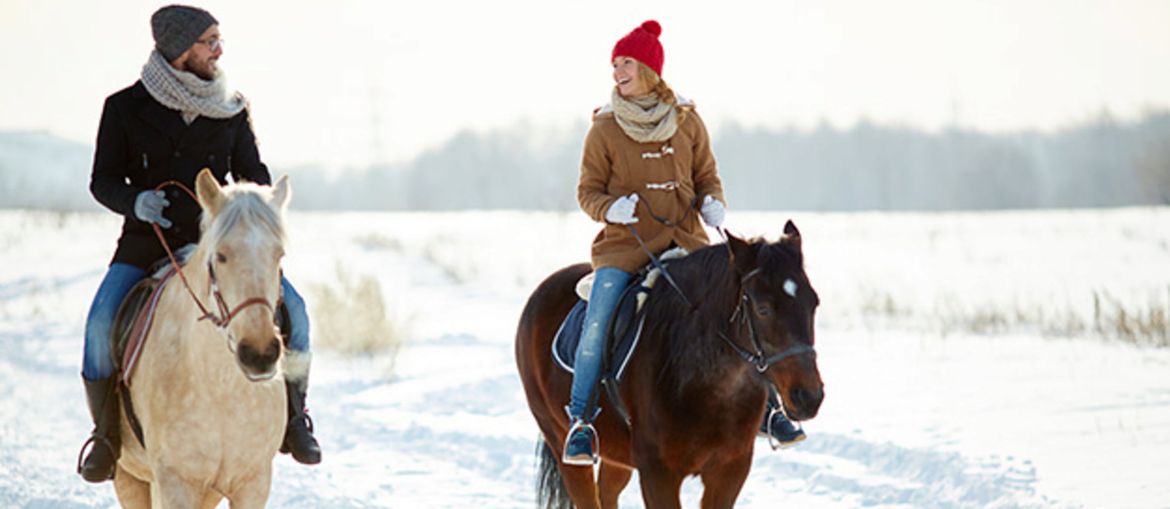Tips for Winter Riding
Horses aren't seasonal creatures, they don't hibernate or become dormant, and because they are made to move we have to ensure that we keep that level of movement up in winter too - whether it's wet, cold or simply uncomfortable outside, your horse still needs exercise. Fortunately, there are a few measures you can take and a few precautions to make for more comfortable and pleasant riding (for both you and your horse!), even in bad winter weather.
Keep yourself warm
First of all, it's vitally important that you keep yourself warm. No matter how uncomfortable it is outside, as long as you're toasty you can still enjoy your winter riding.
Keep a warm head
The average person loses up to 50% of their bodyheat through their head. Therefore, you should always wear a condition-appropriate hat that will keep you warm. This isn't always possible with a riding helmet, but at least ear warmers will help reduce heat loss. A scarf also helps to contain warmth.
Don't get cold feet
There is a reason why, in the past, when people had a cold their feet were always kept warm. After all, there are few things more uncomfortable than ice-cold, almost frozen feet. Once your feet are cold, there's almost no way to warm them up again until you get can return indoors. One way to combat this problem in winter is to use thermal riding boots. If you don't want to go without your leather riding boots, then you should at least have a pair of separate stable shoes that are dry and warm. While you're out riding, you can keep the stable shoes in a warm, dry place, so that you can simply slip into cozy, toasty shoes when you are back.
The right clothing
Fortunately, these days there are clothing options for all seasons and weather conditions. In winter it's particularly important to prevent your body from cooling down. It's a really good idea to equip yourself with thermal riding breeches/jodhpurs, riding gloves, boots and preferably a warm jumper and warm socks. Low temperatures don't have to be an inconvenience.
Of course, you shouldn't forget a proper jacket. In winter, mixed polyester/down combinations have proven their worth time and time again. However, always remember that a good winter jacket should also be moisture-repellent as well as toasty in case of snow or rain.
If you're not sure whether you have dressed warmly enough, it is always advisable to play it safe and layer up. If it turns out to be too warm for you, you can simply remove a layer. This is an excellent opportunity, especially when training in the riding arena, not to freeze and to be able to react flexibly to the circumstances.
Being seen
Winter is the dark season. On longer riding days the dark can sneak up on you relatively quickly. To avoid exposing yourself and your horse to unnecessary danger in such situations, you should wear reflective clothing and equipment, e.g. reflective gaiters or jackets. It's also sensible to bring a torch with you. The more reflective or glowing things you have with you, the better. However, it's important that your horse gets used to these things so as to avoid spooking.
The right sustenance
On long riding days, for example if you plan to ride more than one horse, you should always bring some hot tea or warm soup with you.
Keep the horse warm
If you've made sure you aren't cold yourself, you're halfway there. Now it's just a matter of keeping your horse warm.
Thanks to their winter coat, horses can cope with the cold very well - in fact it's much easier for them to deal with than heat. For most horses that are kept fit and healthy, and have developed a lot of winter fur, it is not necessary to put on a rug. However, if your horse is kept in a stable/stall and therefore has less winter coat it's advisable to put on at least one rug when riding out. This prevents the muscles from cooling down even during energy intensive phases. A rug is an absolute must for shorn horses or horses that are usually covered during winter.
Prevent colds
As practical as a horse's thick winter coat is, it can also trigger a cold. If it's not bitterly cold, the horses sweat much faster. Because the winter coat is so dense it can take a really long time to dry out again and this is where the risk of catching a cold increases. So try to avoid making your horse sweat as much as you're able.
If your horse cannot avoid sweating, always use a sweat rug. This transports and wicks the moisture quickly away from the skin and stops your horse from rapid cooling in drafts and cold winds.
Stock up if necessary
Working out the right time to cover with a winter rug is a science in itself. In the case of horses that are kept robust and with which little work is carried out in the cold months, a winter blanket is usually not necessary. Horses that are normally worked and that tend to have thick winter fur can be sheared if necessary and then covered. The advantage of this is that your animal sweats less during training and the fur dries faster. The rug replaces the winter coat and keeps your horse warm.
Conclusion
As you can see, it isn't witchcraft to make winter riding comfortable for you and your horse. However, it is always important that you understand and respect the circumstances. Ice and hidden holes in the ground can easily be overlooked. You should never go for a ride if you aren't completely sure of the ground conditions or if the visibility is poor. You could be putting yourself and your horse in unnecessary danger.
Follow our advice and you'll be able to enjoy some wonderful rides in front of a dreamy winter backdrop.
Related products
-
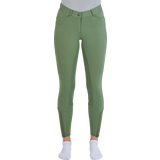
BUSSE SENJA-WINTER Breeches, Winter Olive, 36
- Warm functional material
- 4-way stretch
- Breathable
€ 124,99Delivery by January 02
-
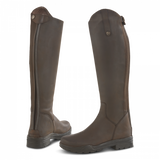
BUSSE Riding Boot - NORWICH, Virgin Wool, Brown, 37 - NN (43/35.5-8) (1 Pair)
- Warm virgin wool fleece
- Oiled nubuck leather
- Variable calf fit
€ 169,99Delivery by January 14
-
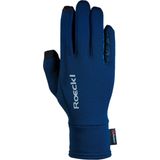 5.0 (1)
5.0 (1)Roeckl Weldon Winter Riding Gloves - Marine, 8 (1 Pair)
- Especially elastic
- Easy to put on
- Slim fit
€ 34,99Delivery by January 14
-
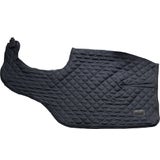
Kentucky Horsewear Exercise Rug, Black, M
- Nice pattern
- Faux fur
- Pleasant material
€ 134,99Delivery by January 14
